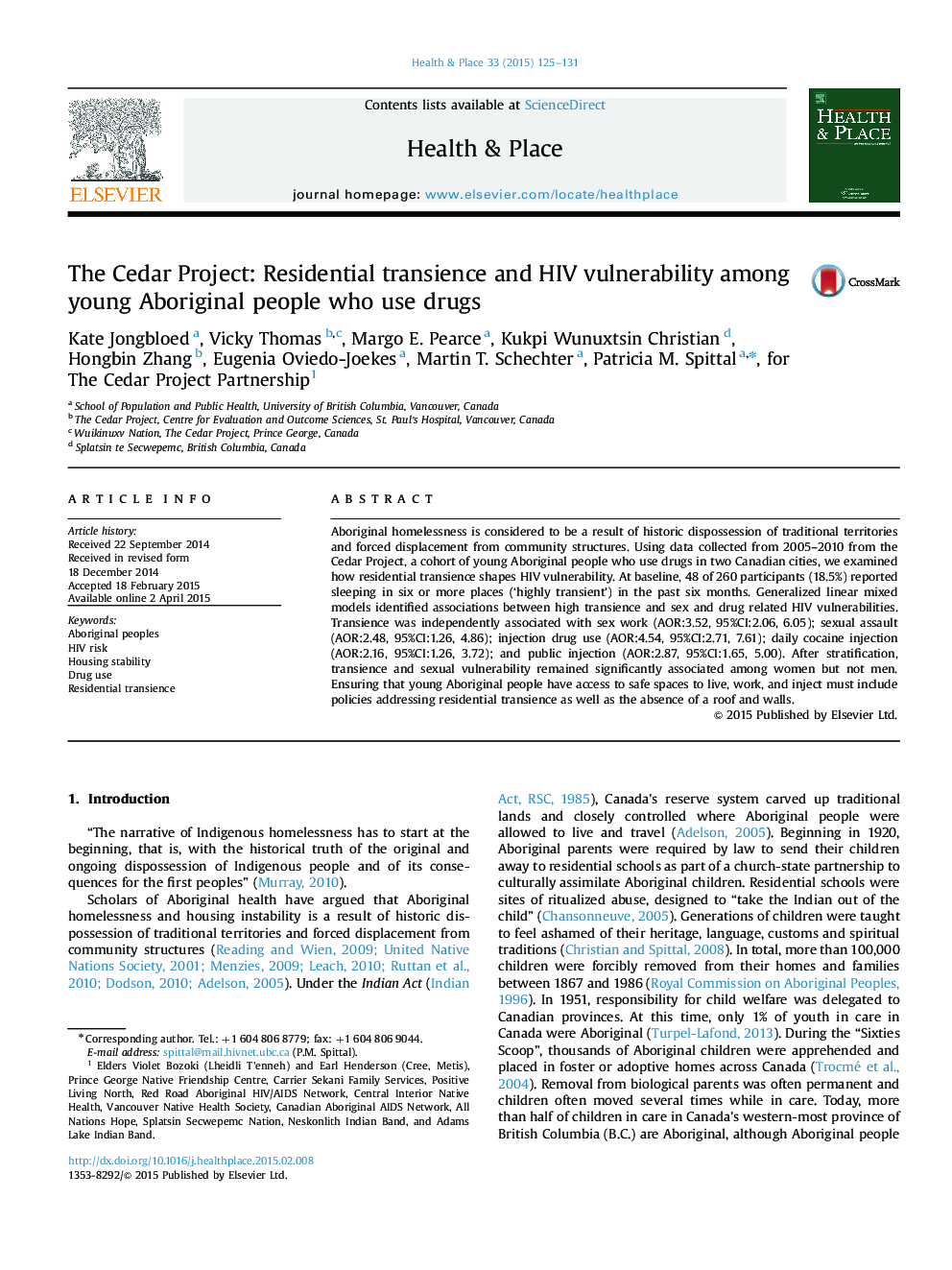| Article ID | Journal | Published Year | Pages | File Type |
|---|---|---|---|---|
| 7458178 | Health & Place | 2015 | 7 Pages |
Abstract
Aboriginal homelessness is considered to be a result of historic dispossession of traditional territories and forced displacement from community structures. Using data collected from 2005-2010 from the Cedar Project, a cohort of young Aboriginal people who use drugs in two Canadian cities, we examined how residential transience shapes HIV vulnerability. At baseline, 48 of 260 participants (18.5%) reported sleeping in six or more places ('highly transient') in the past six months. Generalized linear mixed models identified associations between high transience and sex and drug related HIV vulnerabilities. Transience was independently associated with sex work (AOR:3.52, 95%CI:2.06, 6.05); sexual assault (AOR:2.48, 95%CI:1.26, 4.86); injection drug use (AOR:4.54, 95%CI:2.71, 7.61); daily cocaine injection (AOR:2.16, 95%CI:1.26, 3.72); and public injection (AOR:2.87, 95%CI:1.65, 5.00). After stratification, transience and sexual vulnerability remained significantly associated among women but not men. Ensuring that young Aboriginal people have access to safe spaces to live, work, and inject must include policies addressing residential transience as well as the absence of a roof and walls.
Keywords
Related Topics
Health Sciences
Medicine and Dentistry
Public Health and Health Policy
Authors
Kate Jongbloed, Vicky Thomas, Margo E. Pearce, Kukpi Wunuxtsin Christian, Hongbin Zhang, Eugenia Oviedo-Joekes, Martin T. Schechter, Patricia M. Spittal, for The Cedar Project Partnership for The Cedar Project Partnership,
